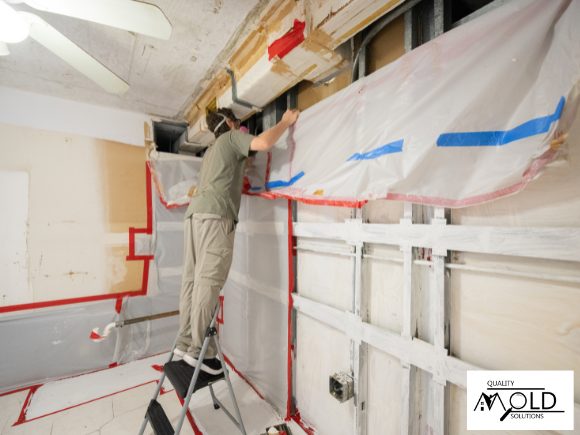Mold can be a persistent and dangerous problem in homes and businesses. Effective mold remediation is essential to ensure the safety and health of occupants. Understanding the mold remediation process helps homeowners and business owners know what to expect and how to address mold issues comprehensively. Here’s a step-by-step guide to the mold remediation process.
Step 1: Initial Mold Inspection
The first step in the mold remediation process is a thorough mold inspection to identify the extent of mold growth and the underlying causes of moisture.
-
Visual Inspection:
- Professionals conduct a detailed visual inspection of the property, looking for visible signs of mold, water damage, and areas with high moisture levels.
-
Moisture Mapping:
- Moisture meters and infrared cameras may be used to detect hidden moisture in walls, ceilings, and floors. This helps in identifying areas prone to mold growth.
-
Air and Surface Sampling:
- Samples from the air and surfaces may be taken to determine the type and concentration of mold spores. These samples are analyzed in a lab to provide a comprehensive understanding of the mold issue.
-
Detailed Report:
- After the inspection, a detailed report is provided, outlining the findings and recommending a remediation plan tailored to the specific situation.
Step 2: Mold Containment
To prevent mold spores from spreading to unaffected areas during the remediation process, proper containment is crucial.
-
Isolating the Affected Area:
- The contaminated area is isolated using plastic sheeting and tape to create a containment barrier. This prevents mold spores from becoming airborne and spreading to other parts of the property.
-
Negative Air Pressure:
- Negative air machines equipped with HEPA filters are used to maintain negative air pressure within the containment area. This ensures that mold spores are captured and filtered out, preventing them from escaping into the surrounding environment.
Step 3: Mold Removal
The next step is the actual removal of mold from the affected areas. This involves cleaning, disinfecting, and, in some cases, removing contaminated materials.
-
Removal of Contaminated Materials:
- Porous materials such as drywall, insulation, and carpeting that have been extensively contaminated with mold are removed and disposed of safely.
-
Cleaning and Disinfecting:
- Non-porous surfaces are thoroughly cleaned using specialized mold removal products. Scrubbing, sanding, and HEPA vacuuming are common methods used to eliminate mold from these surfaces.
-
Antimicrobial Treatment:
- After cleaning, surfaces are treated with antimicrobial solutions to kill any remaining mold spores and prevent future mold growth.
-
Drying and Dehumidification:
- Industrial-grade dehumidifiers and air movers are used to dry the area completely. Reducing moisture levels is critical to prevent mold from returning.
Step 4: Post-Remediation Mold Testing
Once the remediation process is complete, post-remediation testing ensures that the mold has been effectively removed and the environment is safe.
-
Visual Inspection:
- A final visual inspection is conducted to ensure that all visible mold has been removed and the area appears clean and free of mold contamination.
-
Air and Surface Sampling:
- Post-remediation air and surface samples are taken to verify that mold spore levels have returned to normal. These samples are compared to the initial samples taken before remediation.
-
Clearance Testing:
- The results of the post-remediation samples are analyzed, and a clearance report is generated. This report confirms that the remediation process was successful and the property is safe for occupancy.


